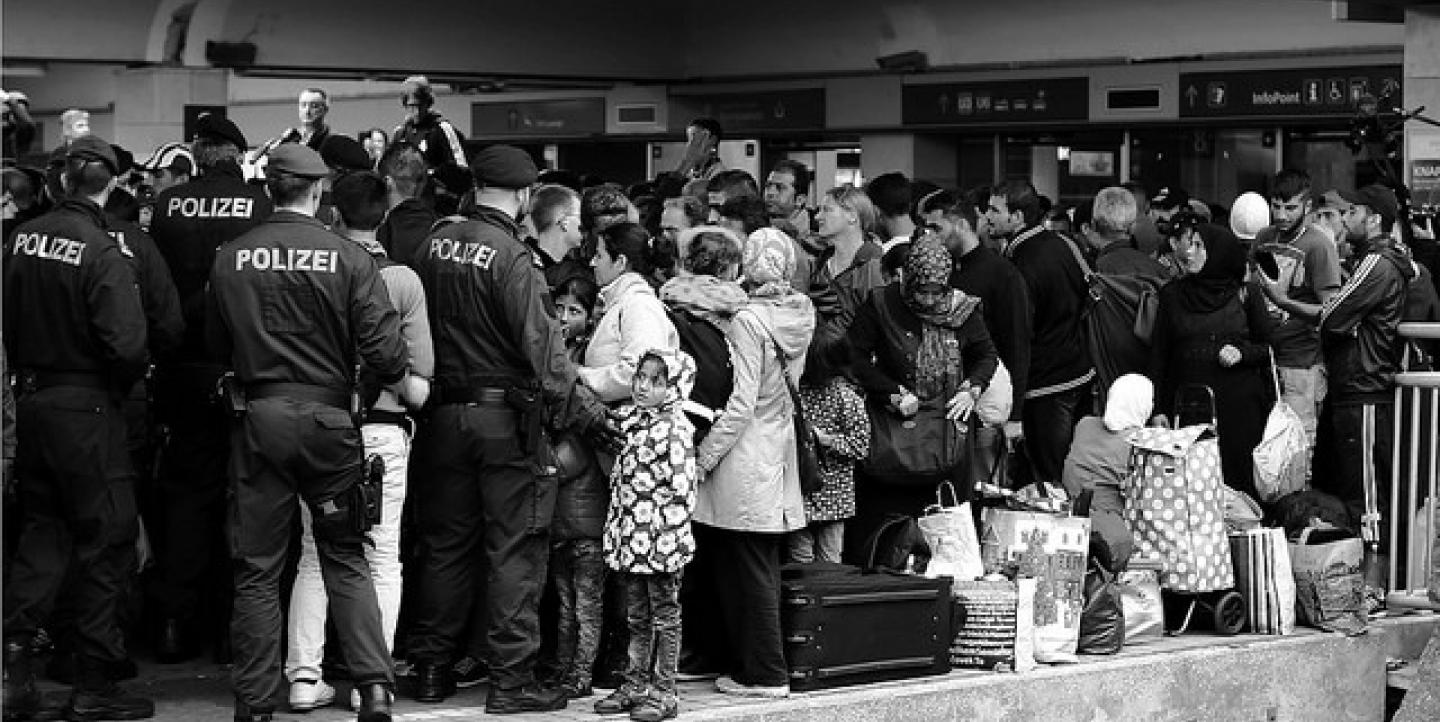Updated at 1:46 p.m. on Sept. 15, 2015
As summer comes to a close, Europe continues to play host to unprecedented human migration. Hundreds of thousands of refugees and migrants from war-torn nations like Syria and Afghanistan have contributed to the largest population displacement seen since World War II.
The United Nations’ refugee agency, UNHCR, reports that more than 380,000 migrants and refugees have crossed the Mediterranean Sea to arrive on European shores in 2015 alone. So far, 50 percent of the arriving migrants and refugees are coming from Syria. During this journey, refugees and migrants are often packed into dangerous conditions, resulting in 2,800 refugee and migrant deaths during the crisis so far. (To learn more about the current crisis, take a look at Vox’s brief explanation about why Syrians are fleeing the country.)
As growing numbers of refugees and migrants attempt the treacherous journey across the Balkan peninsula into Germany and other northern European countries, several news organizations have sent journalists to the locus of activity to get 360-degree coverage of the crisis. Here’s a look at four journalists documenting the migrant crisis on social media using images, text and video:
Matthew Cassel, VICE News, Al Jazeera @matthewcassel
Multimedia journalist and filmmaker Matthew Cassel has traveled to Gevgelija, Macedonia and Budapest, Hungary to get a firsthand glimpse of the refugee experience. His work includes a short film for Al Jazeera that chronicles the everyday work of Gabriela Andreevska, a Macedonian activist who provides weary refugees and migrants with food, clothing and information in lieu of government assistance. For VICE News, Cassel also covered the refugees’ train journey from Hungary to Austria, speaking directly with the refugees themselves about their experiences in Hungary’s detention centers.
Griff Witte, The Washington Post @griffwitte
In addition to covering the refugees’ journey into Western Europe in traditional articles for The Washington Post, Witte has also been tweeting images and videos from the Serbian-Hungarian border. At this border crossing, police escorts and barbed wire fences stand in many people’s way as they seek to cross into Hungary on foot.
Anemona Hartocollis, The New York Times @anemonanyc
The New York Times has a team of journalists covering the refugee crisis, but the work of reporter Anemona Hartocollis stands out. Hartocollis documents the sights and sounds of the migrants’ long journey into Western Europe with the Times’ Reporter's Notebook. With several new updates each day, readers get a near-firsthand glimpse into refugees and migrants’ everyday lives. Hartocollis’ work successfully distills the seemingly endless crowd of migrants and refugees into snapshots of real people, each with their own unique hopes and struggles.
Eleanor Beardsley, NPR @elbeardsley
In addition to her regular radio broadcasts, Beardsley has been regularly updating her Instagram account with images from the train stations of Budapest and Vienna, Austria. These stations, where many migrants and refugees have waited for trains to take them westward, have become some of the most well-known cruxes of the crisis — and Beardsley’s photos illustrate what life is like for refugees stuck inside the train stations.
Ravin Sampat, BBC Panorama @_sampat, @bbcpanorama
BBC Panorama has documented the crisis in a unique way: through Snapchat. The Snapchat account — bbcpanorama — posted as many as 25 pictures or videos to its Snapchat story per day during its coverage. Snapchat users who follow the account were able to view these posts for 24 hours before they disappeared.
Ravin Sampat, senior audience engagement producer for BBC Current Affairs, ran the BBC Panorama Snapchat account during its weeklong coverage, which ended on Sept. 14. He said each snap got more than 200 views on average.
“We followed refugees for one week for our documentary on the BBC Panorama program,” he said. “We went from Greece to Macedonia to Serbia to Hungary to Austria. This accompanied it as a digital documentary.”
Sampat also said he hopes the BBC Panorama Snapchat account will be used again in the future to document the news in an innovative way.
Do you know of any other journalists reporting on the refugee crisis in Europe on social media? Let us know by tweeting @ijnet.
Image CC-licensed on Flickr via Josh Zakary.

